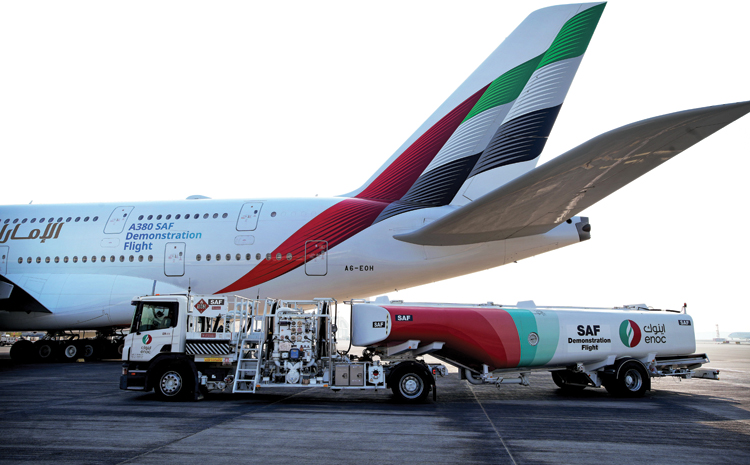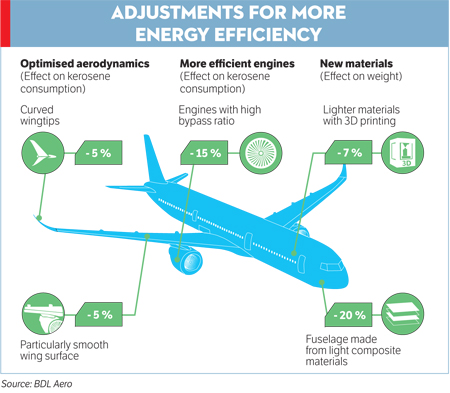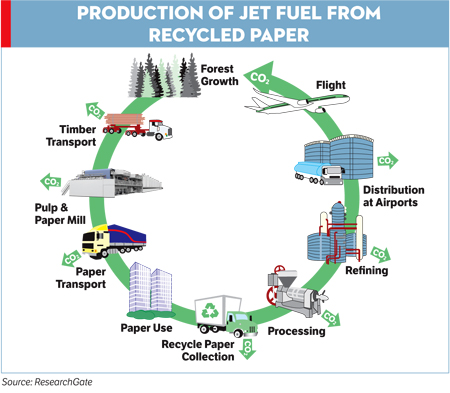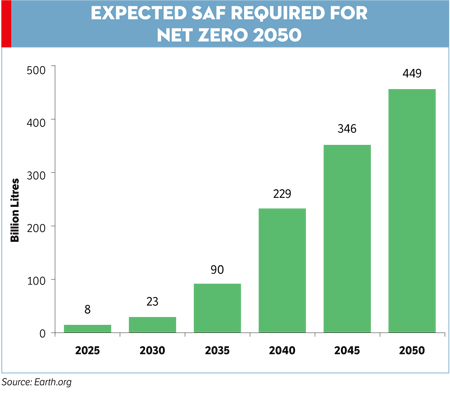INDIAN ARMED FORCES CHIEFS ON OUR RELENTLESS AND FOCUSED PUBLISHING EFFORTS

The insightful articles, inspiring narrations and analytical perspectives presented by the Editorial Team, establish an alluring connect with the reader. My compliments and best wishes to SP Guide Publications.

"Over the past 60 years, the growth of SP Guide Publications has mirrored the rising stature of Indian Navy. Its well-researched and informative magazines on Defence and Aerospace sector have served to shape an educated opinion of our military personnel, policy makers and the public alike. I wish SP's Publication team continued success, fair winds and following seas in all future endeavour!"

Since, its inception in 1964, SP Guide Publications has consistently demonstrated commitment to high-quality journalism in the aerospace and defence sectors, earning a well-deserved reputation as Asia's largest media house in this domain. I wish SP Guide Publications continued success in its pursuit of excellence.
- A leap in Indian aviation: Prime Minister Modi inaugurates Safran's Global MRO Hub in Hyderabad, Calls It a Milestone
- All about HAMMER Smart Precision Guided Weapon in India — “BEL-Safran Collaboration”
- India, Germany deepen defence ties as High Defence Committee charts ambitious plan
- True strategic autonomy will come only when our code is as indigenous as our hardware: Rajnath Singh
- EXCLUSIVE: Manish Kumar Jha speaks with Air Marshal Ashutosh Dixit, Chief of Integrated Defence Staff (CISC) at Headquarters, Integrated Defence Staff (IDS)
- Experts Speak: G20 Summit: A Sign of Global Fracture
Sustainability — A Big Milestone
A steely-eyed focus on sustainability is fundamentally altering the way the airline industry operates. But the pace of progress in both SAF and engine enhancement must be greatly accelerated to make net zero a reality.

Commercial flight is the only viable option for transporting large groups of people quickly over large distances. The aircraft that do this burn fossil fuel, which is packed with energy but releases carbon dioxide (CO2) and nitrogen oxides (NOx) into the atmosphere when burnt. While there has been tremendous progress in increasing fuel efficiency and curbing emissions over the decades, aviation is currently responsible for 2.5 per cent of global greenhouse gas (GHG) emissions. In addition, aviation condensation trails (or contrails) that contain ice crystals as well as water vapour, soot and sulphate aerosols contribute significantly to global warming in ways that are still being assessed. While other highly emissive industries like energy, road transport, and steel and cement manufacturing are gradually going green, air travel is extremely hard to decarbonise. Hence its relative share of emissions is expected to rise. But what makes the picture truly worrisome is that air traffic is surging across the globe, so aviation’s emissions could well triple by 2050.
Acutely aware of the looming possibility that commercial aviation could effectively become environmentally unsustainable, in October 2022, member states of the International Civil Aviation Organization (ICAO) agreed to a long-term aspirational goal (LTAG) of net zero emissions from aviation by 2050. Net zero means the amount of GHG removed from the atmosphere is equal to that emitted by that activity. A near-term milestone of reducing carbon emissions by five per cent by 2030 has also been formulated. So, what is the airline industry doing to promote sustainability?
AIMING AT EVERYTHING
Sustainable aviation is a multidisciplinary field that seeks to reduce aviation’s environmental footprint through innovation and new practices. Some measures are fairly obvious and ongoing. For instance, thanks to airframe redesign and more fuelefficient engines, a typical flight today generates just half the CO2 it would have in 1990. Many airlines are resolutely getting rid of their older aircraft and investing in modern, fuel-efficient planes like the Airbus A320neo and the Boeing 787 Dreamliner. The A320neo offers approximately 15-20 per cent fuel savings compared to the older A320ceo aircraft.

However, rather than wait endlessly for new airliners, airlines are also striving to enhance operational efficiency and reduce emissions by optimising flight routes, minimising aircraft taxi times, and reducing weight. No sustainability measure is too small. Artificial intelligence (AI) can help avoid flight delays, reduce fuel consumption and select flightpaths that avoid or reduce contrail production. A relatively modest investment in new, lightweight seating can reduce aircraft weight and significantly lower emissions over time. Similarly, sustainable cabin practices can make a substantial contribution to going green. For instance, some airlines are reducing the use of single-use plastics because they generate huge amounts of GHG and create mountains of waste. They are striving to recycle on-board waste, and even aiming for more sustainable catering options.
Carbon offsetting programmes or “green fares” allow conscientious passengers to voluntarily offset the emissions from their flights by contributing to projects that reduce emissions, such as renewable energy installations or reforestation efforts. But recent revelations about dodgy offset accounting practices have reduced their appeal, and many airlines like JetBlue and EasyJet are moving away from offsets.
One clear indication of the seriousness with which the industry is striving for sustainability is that some airlines are integrating air travel with other modes of transportation to reduce emissions. For example, Lufthansa offers passengers combined air and rail tickets for convenient and eco-friendly short journeys.
SAVING WITH SAF
In the pursuit of sustainability, nothing holds greater potential than sustainable aviation fuel (SAF). SAF is a biofuel very similar in chemistry to traditional jet fuel. It promises up to 80 per cent reduction in carbon emissions compared to the fuel it replaces over the lifecycle of the fuel. SAF can be made from a variety of renewable biomass and waste resources, including corn, oilseeds, algae, waste oils and greases, and agricultural and forestry residues. Being a “drop in” fuel, SAF can be blended with normal fuel up to 50 per cent. Research is underway to permit even 100 per cent blending.
However, the widespread adoption of SAF is being hampered by limited availability and high cost. The International Air Transport Association (IATA) stresses that the airlines’ demand for SAF “vastly exceeds” supply, which accounted for just 0.2 per cent of total jet fuel consumption in 2023. On average, SAF works out two to five times more expensive than traditional jet fuel. However, as the technology matures, and production volumes rise, it is expected to become more affordable.
The United States plans to produce over 11 billion litres of SAF by 2030 compared to just 16 million litres in 2022. Europe will legally require six per cent of all aviation fuel to be SAF, up from two per cent today. In fact, more than 100 countries have agreed that aviation fuel in 2030 should be at least five per cent SAF blended. As of July 2023, 11 conversion processes for SAF production had been approved and others are under evaluation. SAF demand can be met only from both natural sources and eFuels. In view of limited natural feedstocks, two processes – Power-to-Liquid (PtL) and Sun-to-Liquid (StL) – are becoming increasingly important. PtL technology produces SAF using green electricity, water and CO2. Sun-to-Liquid (StL) is a process that uses concentrated solar energy to create SAF from water and CO2.
LEADING THE SUSTAINABILITY CHARGE
Several airlines are taking the lead in implementing innovative sustainability initiatives. These global leaders and employing specific strategies to create a greener future for air travel.
United Airlines. United plans to introduce a regional US flight service aboard 100 30-passenger hybrid-electric planes, from Swedish startup Heart Aerospace, by 2028. It’s one of several innovative electric- and hydrogen-technology development partnerships that the airline is backing, while it’s also invested in the production of 5 billion gallons of SAF, including biofuel sourced from microalgae – the largest airline commitment worldwide. United also recently rolled out a Sustainable Flight Fund that allows passengers and corporate partners to buy into SAF development, while its website now displays estimated CO2 emissions alongside flight search results.
Alaska Airlines. While most major global airlines are targeting 2050 for net-zero carbon emissions, Alaska Airlines intends to meet that target as soon as 2040. To do so, the airline is laserfocused on fuel efficiency and has invested heavily in SAF (including CO2-derived versions). It’s also announced a partnership with the US-headquartered hydrogen-electric aircraft developer ZeroAvia to retrofit one of their regional aircraft as a hybrid hydrogen-electric plane. Customers will also notice single-use plastics reduction on board, like boxed water instead of plastic water bottles and paper cups instead of plastic ones; the line also composts select food waste like coffee grounds.

Air France KLM Group. The group is dedicated to accelerating its environmental transition and ensuring its position in a more sustainable aviation industry. The group has continued working on its trajectory to decarbonise all activities, formalising its action plan through ‘Destination Sustainability.’ By 2030, the group is committed to reducing CO2 emissions per passenger-kilometre by 30 per cent compared to 2019 levels. Additionally, it has pledged to use at least 10 per cent sustainable aviation fuel by 2030, exceeding the 6 per cent requirement for departing European flights. To meet these targets, Air France KLM is taking action on multiple fronts: accelerating fleet renewal to reach 64 per cent new generation aircraft by 2028 (which offer a 20 to 25 per cent reduction in CO2 emissions and a 34 per cent lower noise footprint), signing contracts and MoUs with several partners for the supply of Sustainable Aviation Fuel and supporting the development of the SAF sector in Europe.
Scandinavian Airlines. While many airlines have been teasing electric flights, Scandinavian airline SAS is the first to take seat reservations for commercial hybrid-electric flights in 2028, aboard 30-passenger Heart Aerospace planes on routes in Sweden, Norway and Denmark. The airline has ambitious targets that include slashing CO2 emissions by 25 per cent by 2025, before phasing them out entirely in Scandinavia by 2030. The airline is backing various other clean-energy and SAF development projects, and has recently begun offering passengers dedicated fares that bundle in the direct purchase of biofuels, too.
Etihad Airways. Etihad Airways has slashed CO2 emissions by a quarter since 2019 thanks to improved operational efficiencies, and has also reduced single-use plastics by 80 per cent. The airline additionally partners with Boeing as part of the decarbonisation-focused “Greenliner” programme, using the carrier’s fleet of Boeing 787 Dreamliners as testbeds for SAF and other eco-friendly technologies. Etihad has a similarly themed “Sustainable50” programme dedicated to its Airbus A350s. The airline is hoping to integrate SAF sourced from CO2, while it has planted tens of thousands of carbon-absorbing trees as part of its Etihad Mangrove Forest project. Etihad was named the “Environmental Airline of the Year” for both 2022 and 2023 by an international rating agency.
Qatar Airways. Qatar Airways is the first airline in the Middle East to achieve the highest level of IATA’s Environmental Assessment programme, demonstrating its commitment to managing environmental impact across all aspects of its business. Operating one of the youngest and most fuel-efficient fleets, the airline prioritises reducing carbon emissions through modern aircraft designs that produce lower emissions and less noise. Qatar Airways also invests in engineering upgrades for airframes and engines to reduce drag and improve efficiency. As the first airline in the Middle East to join the IATA Turbulence Aware data exchange platform, it ensures smoother journeys with lower fuel burn. Additionally, Qatar Airways has implemented over 80 fuel optimisation programs and identified opportunities to reduce fuel burn during all flight phases through Performance Based Navigation (PBN). Committed to advancing sustainable aviation fuel (SAF) despite challenges of accessibility and cost, the airline aims to use 10 per cent SAF by 2030.
Emirates. Emirates’ policy of investing in the most modern, eco-efficient technology available means that the airline has one of the youngest fleets in the industry. All their aircraft meet the applicable ICAO engine emission standards. Emirates Engineering ensures that our engine washing procedures keep internal engine components clean, maintaining fuel-efficient performance and having a clean aircraft exterior to help to reduce fuel consumption and emissions by making the aircraft lighter and more aerodynamic. The airline has invested in one of the best flight planning systems available, to carefully plan flights and optimise routes. Emirates prioritise the use of ground power and pre-conditioned air where it is available so that the aircraft’s auxiliary power unit can be switched off. All of these measures help to save fuel and emissions. Their flight operations specialists collaborate with air traffic control organisations internationally to deliver more efficient routes and operational procedures, applying the latest in technology to support these enhancements. Their efforts to minimise environmental impact continue onboard the aircraft. The Economy Class blankets on long-haul flights are made from 100 per cent recycled plastic bottles. Cutting down on unnecessary weight also helps us save fuel. Lightweight cargo containers and optimal amount of potable water are used on each flight.

These airlines are just a few examples of the leaders taking the aviation industry towards a more sustainable future. By implementing innovative strategies and prioritising environmental responsibility, they are paving the way for a cleaner and healthier world for generations to come.
ELECTRICITY AND HYDROGEN
Further into the future, there is hope that electric and hydrogen propulsion will answer even the biggest sceptics’ objections about the long-term sustainability of the airline industry. Under the Electrified Powertrain Flight Demonstration (EPFD) project, GE Aerospace is teaming with NASA and Boeing to develop an integrated, megawatt-class hybrid electric propulsion system for ground and flight tests later this decade. Pratt & Whitney is developing a hybrid electric GTF demonstrator known as SWITCH (Sustainable Water-Injecting Turbofan Comprising Hybrid Electrics) which could enable up to 25 per cent better efficiency in future short and medium range aircraft. And in February 2022, CFM and Airbus announced a landmark hydrogen demonstration programme under which a hydrogen combustion demonstrator engine could be flight tested within the next few years. However, while electric, hydrogen, and hybrid aircraft could play an increasing part in decarbonising short and medium-haul flights, they are unlikely to be capable of long-haul flights due to their limited flight ranges and the weight of today’s batteries. There is also a huge hidden carbon-heavy cost for innovative energy sources – they will demand new planes.
A NOTE OF CAUTION!
The airline industry will face growing headwinds for the next few years as governments and people raise concerns about the climate change impact of air travel. Climate anxiety is increasing even for air travellers. According to a 2022 survey by McKinsey, 56 per cent of passengers surveyed said that they are “really worried” about the industry’s climate impacts. Airlines are also coming under increasing pressure over perceived “greenwashing”, with activists challenging every claim of climate progress. They term carbon offsetting as “the biggest climate scam.” Even the European Union no longer allows offsets to be counted towards emissions reduction targets.
With the 2030 milestone only six years away, SAF remains one of the most promising near-term avenues. However, thereafter, the scale-up of SAF production and usage required to reach the net zero milestone is mind boggling – from just 600 million litres in 2023 to 450 billion litres in 2050. The need of the hour is technology that can produce much more SAF at a much lower cost. Otherwise, sustainability is by no means assured.
The aviation industry itself appears to be banking heavily on SAF to deliver the steep reductions in emissions needed to reach net zero. This is indicated by delayed major product launches, whether for fear of high development costs, or in hopes of achieving future performance improvements. While the RISE programme could be invaluable for Airbus and Boeing to develop new-generation, fuel-efficient, single-aisle aircraft, there is no clear indication that these manufacturers have any such plans. However, even if SAF totally replaces fossil fuels, IATA calculates it would contribute only 65 per cent of the reduction in emissions needed to reach net zero by 2050.
A steely-eyed focus on sustainability is fundamentally altering the way the airline industry operates. But the pace of progress in both SAF and engine enhancement must be greatly accelerated to make net zero a reality. According to Mohamed Ali, GE Aerospace’s vice president, “There is no one-fuel or one-technology that will get us to the net-zero goal. It will take new fuels, it will take new engines, and it will take new technologies to get us there.” He concludes, “We don’t have a day to spare.”





